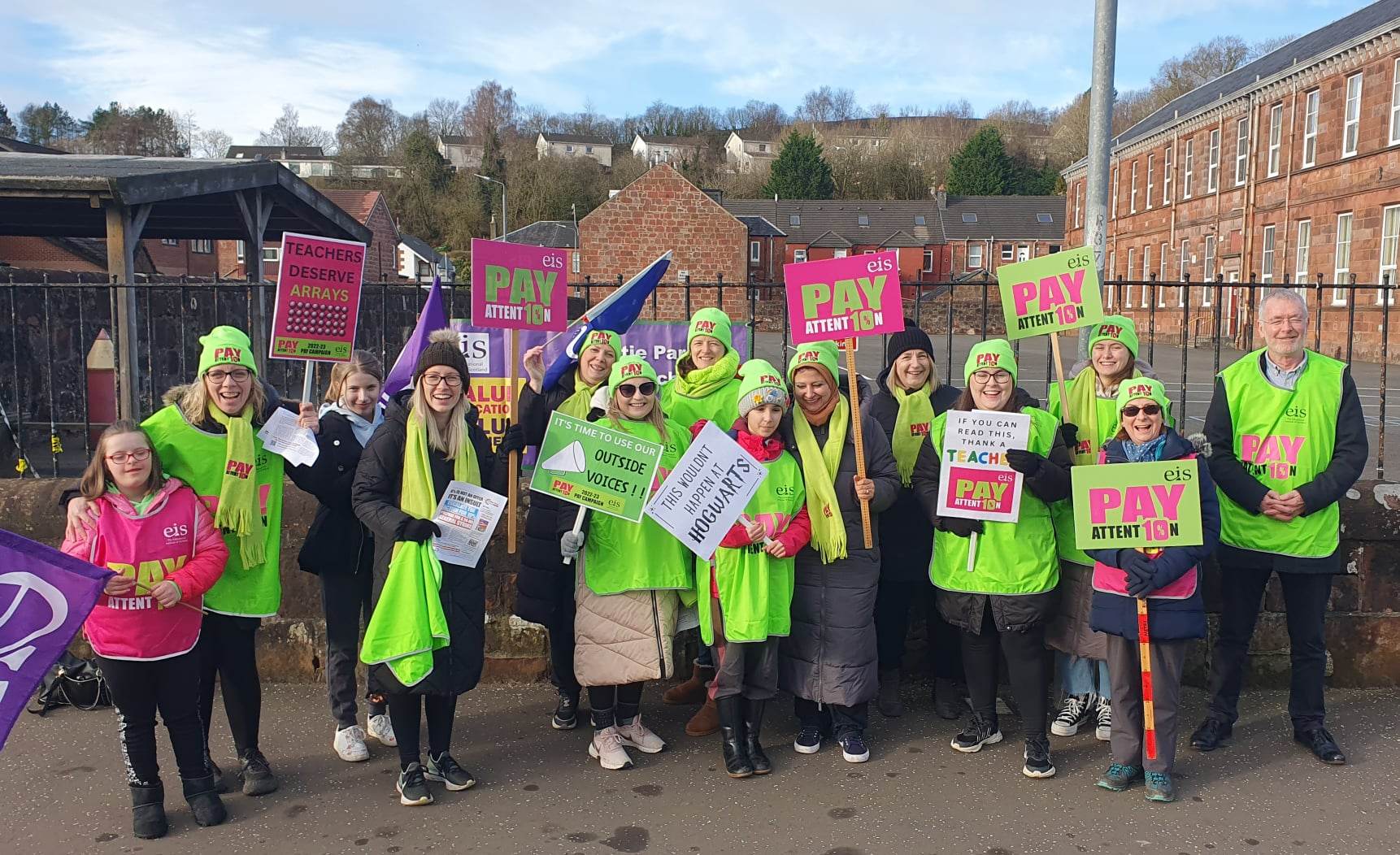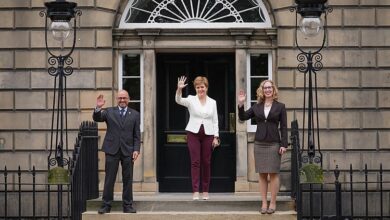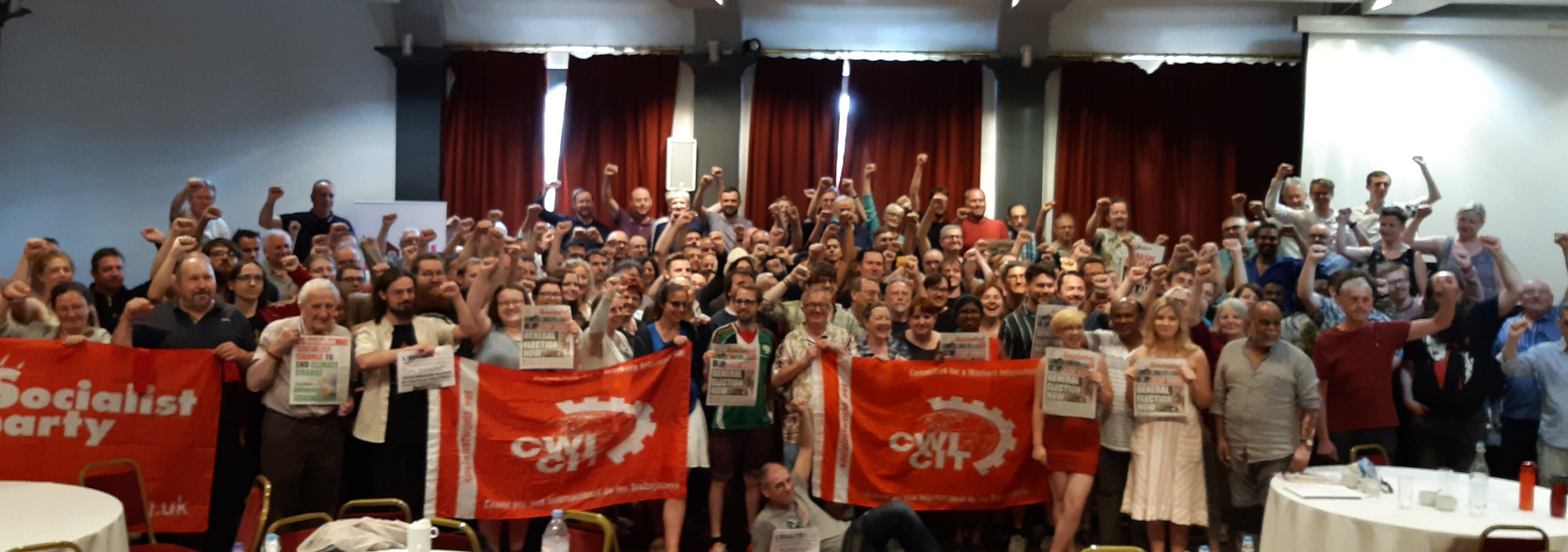Teachers’ strike action forces sixth pay offer – but more can be won

By Socialist Party Scotland members of the EIS
After a wave of national strike action by EIS members in pursuit of our 10% pay claim, we have now received our sixth pay offer from the employers.
What began as a joke of 2% back in April 2022 is now 7%. The resolute and utterly solid action by EIS members, which also involved other teaching unions, began in November 2022.
We have taken five days of strike action and this has forced the Scottish government to retreat yet again. Strike action works. That is the message we have to take from what has been won so far.
It is a testimony to the incredible determination of tens of thousands of our members – many taking to the picket lines for the first time in their lives – that the SNP-Scottish Green government have been faced down.
The 7% offer for 2022/23 is of course still below inflation and represents a pay cut of around 5% when inflation is taken into account.
The latest offer also includes a second year element – in reality an offer over 16 months – of 5% from April 2023, and an additional 2% from January 2024 to run until August 2024.
The EIS salaries committee have calculated that this is worth 14.6% (compound interest) over the 28-month period. Again, this was only possible as a result of the iron-like determination of our members not to accept a series of utterly derisory pay offers.
The current offer means £320 million has been wrestled from the Scottish government to fund the deal. This follows concessions made to local government and NHS workers in Scotland following strike action or the threat of strikes.
The EIS national executive have suspended the programme of strike action to give time to consult the membership. They are recommending acceptance of the offer.
The view of Socialist Party Scotland members of the EIS is that while much has been won, the deal still falls short of our 10% demand (which actually is still a pay cut for 2022/23).The second element of the proposed deal is also less than our members need and deserve.
Inflation remains stubbornly high. We all know that food inflation alone is running at close to 20%. It’s very likely that the 5% to be added to our pay from April 2023 will also be significantly below inflation.
We also know that workload and the issue of non-class contact time are huge unresolved issues not being addressed by COSLA and a Scottish government carrying out over £700 million in cuts to Scottish local government budgets this year.
There is of course the real financial pressures on members who have lost around £750 from pay packets due to the five days of strike action. The around £2,000 that Scottish teachers will receive in their salaries from the backdated element will come as a relief to many.
However, our view is, on balance, that the offer is not yet good enough and should be rejected.
With the strike action programme due to see a further escalation and another three days of strike action by all our members in March and April, its clear that further pressure can be applied to a government that is riven by splits and divisions.
Whoever becomes the next first minister, they will inherit a weak and divided government that can be forced into further concessions by the trade unions, including the EIS.
The morale of our members is still strong. While of course we must take account of morale and the solidity of the membership in a long-running dispute, we don’t believe that we have reached the stage that teachers have gone as far as they can with this struggle.
For these reasons we support a rejection of the current offer and a return to the planned strike action to win what we all deserve – a pay rise that really tackles the cost of living crisis.
Historic strike action
For the first time in over 40 years teachers, members of the EIS union, walked out in a wave of national strike action in pursuit of our 10% 2022/23 pay claim. It involved workers from a wide variety of backgrounds who had never seen strike action in their lifetime of education, either as a pupil or as a teacher.
However, the action was needed and it was not taken lightly. In February 2022 the government were advised that a pay claim would be coming of a significant difference. On November 10, 2022, 70.66% teachers voted and 95.77% of them voted to strike. It was clear there was a mood for action – teachers were fed up with the being low paid and undermined.
The first offer of 2% in May 2022, was derisory and insulting to the hard work and efforts of teachers, especially considering inflation was already catapulting towards 10%. It was updated to 3.5% in early August and then later in the month to 5% but still hailed by teachers to be far short of what was needed, and not enough to stop teachers striking in November 2023.
The first action in November meant the closure of all schools across mainland Scotland, and was followed by further action in January, and then rolling strikes across Scotland’s 32 local authorities
The strike front lines were solid and supported by parents and guardians, despite media attempts to try to find otherwise.
As each day of action rolled on the familiar site of teachers in the pink and green on the EIS donned social media and the press and TV. Falkirk High picket line even reached The Graham Norton show.
Further action came at the targeted constituencies of Scottish government ministers before any hint that there might be any new offer.
The first sight of change from the Scottish government came with an increased offer of 6% then 5.5% at the start of 2023 meant action was not called off.
However, another teaching union, the SSTA, went to consultative ballot and with 76% return, 52.77% voted to accept. This led to people leaving to join the EIS to take part in our two further strike days on February 28 and March 1.
These days saw complete school closures across primary and secondary schools before another offer was forthcoming.
From a Scottish government hailed that they wanted to be judged on education, altogether five days of strike action was taken before the government retreated again. This time the offer was upped to 7% , below inflation still but backdated to April 2022. The offer does reflect a further pay cut of 5% when inflation is taken to account.
Also, the big issues of workload and ASN provision are still to be addressed. The arguments over class contact – a manifesto pledge of the Scottish government – mean that teachers will use their anger still to continue to move these issues forward.



